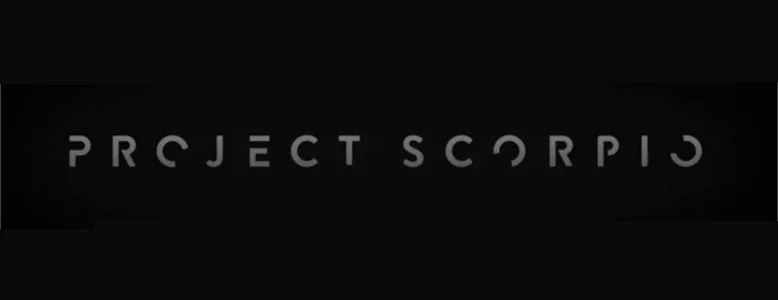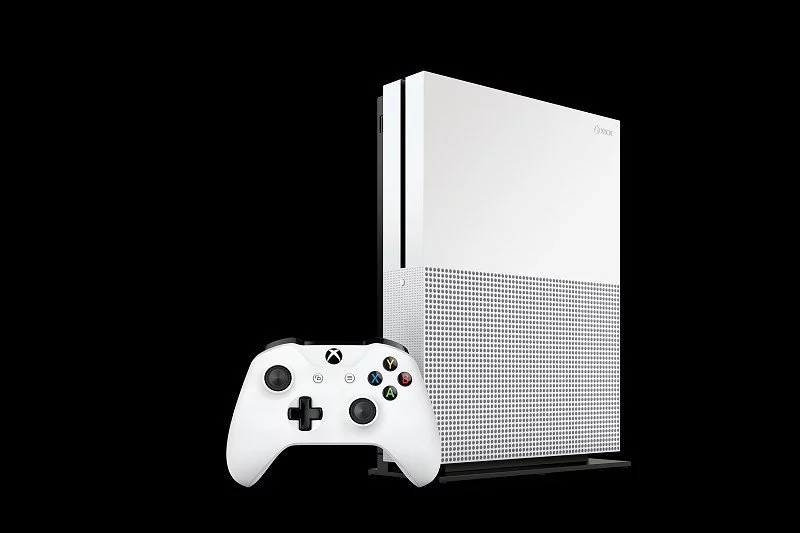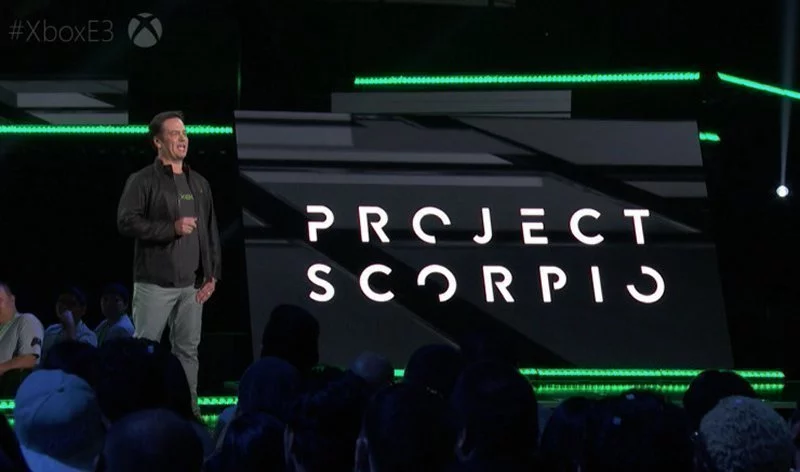By now you’ll have heard that Sony pretty much dominated the E3 press conferences with its steady stream of game announcements and trailers, barely skipping any beats to discuss much else. But one of the other biggest announcements out of E3 was one many already saw coming due to leaks in the weeks prior: Microsoft has a new console codenamed Project Scorpio in the works.
Both Microsoft and Sony have smaller remodels of their current hardware coming this year in the forms of the Xbox One S and a newly rumoured PlayStation 4 Slim. They’re smaller and more cost-efficient to produce, but as far as we currently know, only the Xbox One S will feature 4k video playback. The PS4 Slim might sport this capability, but we’re even more in the dark on that than we are on Sony’s direct competition to Scropio, the Neo, (though, the beefed-up console will support the UHD format).
So let’s talk about what we know: Scorpio. At E3, Xbox head Phil Spencer presented a video of high profile developers talking about wanting stronger hardware capable of VR and 4k gaming. Current-gen consoles are capable of VR with the help of some extra hardware (the PlayStation VR helmet has a separate processing unit that assists the PS4), but none are designed to have the architecture built-in natively. While Sony has their own in-house hardware being developed, Microsoft announced a partnership with Oculus last year at their Windows event alongside their own augmented reality headset called HoloLens. It seems like a no-brainer to get the ball rolling on a console that’s capable of VR given that Oculus and HTC’s Vive are already out the door for PC and PS VR arrives later this year.
That’s where this announcement comes off as a little odd. Scorpio isn’t set to release until holiday 2017. That’s about sixteen months away. Not even the PlayStation 4 or Xbox One had as much time between announcement-to-release back in 2013, and those were full-fledged generational steps up. This begs the question: is Scorpio a next-gen console?
The time of release between the Xbox One and Xbox Scorpio will have been four years – November 2013 to November 2017. While that might not seem long — given last gen was eight years between 2005 to 2013 – that matches the time between the original Xbox and the Xbox 360: November 2001 to November 2005.
Spencer has declared that the Scorpio will be the “most powerful home console ever created,” which could be seen as a less-assuring aspect for Nintendo fans who were banking on the NX when it joins the fray of 2017 consoles. At the presentation Spencer also announced an initiative called Xbox Anywhere, in which Xbox exclusives purchased for either Windows PC or console will be available to the player for free on the other system as well. With last year’s surprise announcement of backwards compatibility from Xbox One to 360 games, Spencer went on this year to reaffirm Microsoft’s philosophy of maintaining compatibility between legacy games going forward.
The main point against the Scorpio being a next-gen console is that Spencer has stressed that there will be no games specific to either console. This comes back to the previous point about compatibility. Again, the console still has 16 more months left in the oven, so that could change. Also, why would Microsoft be investing so much money and time into a third console specifically geared towards current-gen, releasing one year after their second?
The Scorpio is meant to be a “beast” of a machine, toting 6 teraflops of processing power to accommodate VR and not just 4K video playback, but 4k gaming. This beats out PlayStation Neo’s rumoured 4.2 minimum teraflops. This type of graphical hardware upgrade would be almost unnecessary outside of 4k gaming, as PS VR is proving capable via its built-in hardware extension. It also seems likely that this next Xbox will be the most powerful system across consoles and PC when factoring in price; a decent 4k gaming-capable PC is difficult to build for under $1000, assuming Scorpio remains well below that threshold.
The other counterpoint to a generational up-step is that consoles could be following the mobile phone evolution route, where each year is a hardware update rather than a shift in generation; players wouldn’t have an entirely new system to consider updating to every year. Given that PC users have been used to the steady hardware update routine for decades, it shouldn’t be a surprise that consoles may eventually follow a similar (not exactly the same, though) evolutionary pattern. With the advent of the Xbox Anywhere initiative for both console and PC platforms, we’re definitely seeing Xbox going from what was specifically a console turn into Microsoft’s overall gaming platform regardless of hardware.
As it currently stands, Scorpio remains a sort of enigma which is natural given it still has a long time before reaching consumer TVs – which will also need upgrading to take advantage of the new console’s graphical output. Whatever the case with Scorpio being current-gen or next-gen, a significantly more powerful console is on its way next year and Microsoft is going in guns blazing.
This article may contain affiliate links, meaning we could earn a small commission if you click-through and make a purchase. Stevivor is an independent outlet and our journalism is in no way influenced by any advertiser or commercial initiative.


























